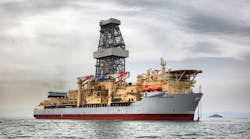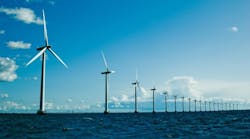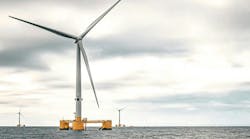Everyone wants to know when activity in the Gulf of Mexico will return to pre-Macondo levels. Right now it's anyone's guess, but recent lease sale results and developing trends suggest a bullish long-term outlook. Western Gulf of Mexico Lease Sale 218, the first such event held since activity was halted in the wake of Macondo, drew a respectable $338 million in high bids, which is considerably higher than the 2009 Western Gulf of Mexico sale (about $115 million) and slightly above the average of the previous five Western Gulf of Mexico lease sales (about $300 million). Twenty companies submitted 240 total bids, which is lower than sales in the previous five years. Three majors, ConocoPhillips, ExxonMobil, and BP, accounted for about 75% of the total nominal value of all high bids. ConocoPhillips was the highest bidder on 75 blocks, including Keathley Canyon block 95, which went for about $103 million – the highest bid in the lease sale. Keathley Canyon 95 is surrounded by previously leased blocks and is just west of BP's promising Tiber discovery in KC 102. Excluding this bid, the other winning bids averaged $1.2 million per lease, in-line with the 2007-08 pre-financial crisis numbers and just below the 2008 average of $1.3 million (excluding the highest bid for that year). It is important to note that the minimum bid requirement for Sale 218 increased to $100 per acre, up from $37.50 in previous sales. The intent, according to the Bureau of Ocean Energy Management, is to encourage faster exploration and development.
Sale 218, the last remaining Western Gulf Planning Area sale scheduled in the 2007-2012 Outer Continental Shelf (OCS) Oil and Natural Gas Leasing Program, made available 3,913 unleased blocks from nine to about 250 mi (14 to 402 km) offshore, in water depths ranging from 16 to more than 10,975 ft (5 to 3,346 m).
Meanwhile, the number of new deepwater (>1,000 ft water depth) permits issued has been increasing since June, with October tallies finishing higher than any month since December 2009 (see article on page 38); rig utilization is improving; dayrates are up; and the backlog of field development projects is growing. The growing backlog is due, in part, to delayed start-ups (see survey on page 42).
Malaysia's production strategy
Malaysia consumes the majority of its oil production, and domestic consumption has been rising as production has been falling. To meet demand, the Malaysian government is opening new investment opportunities to enhance output from existing oil and natural gas fields and to advance exploration in deepwater areas offshore Sarawak and Sabah. The target is to increase aggregate production capacity by 5% per year through 2020. A comprehensive lineup of industry experts at Offshore Asia Conference & Exhibition, Feb. 21-23, 2012, KLCC Convention Center, Kuala Lumpur, Malaysia, will address these and other important regional issues. The Welcome Address will be given by the Economic Planning Unit, Prime Minister's Department, Malaysia, which will be followed by the Keynote Address from Chen Kah Seong, Head, Petroleum Engineering Division, Petronas Development & Production. For more information and to register for the conference, please visit:www.offshoreasiaevent.com.
To respond to articles in Offshore, or to offer articles for publication, contact the editor by email([email protected]).
Offshore Articles Archives
View Oil and Gas Articles on PennEnergy.com




